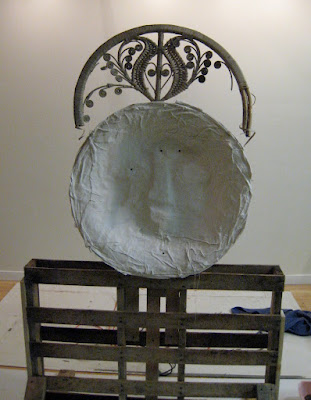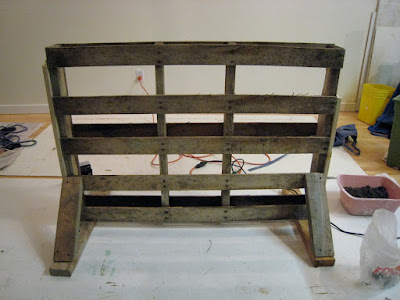

Photos from
Harvard University Graduate School of Design websiteI've got to say I like the concept more than the execution.
Yes, I get the allusions to the Japanese ceremonial piles of gravel. But the reason those are beautiful is that they are carefully maintained and groomed to perfection.
They are also twice the size of this dump zone. This "sculpture" is not large enough in scale to its site to make an impact.
A high concept idea that is cheap to install does not make art. Stock-Pile, after a season of kids playing, is going to be a muddled mess, an abandoned construction site. That may be an appropriate theme for 2009, but not what Harvard University needs to symbolize their Graduate School of Design.
--------------------------------------------------------------------------------------
Here's the official story also from
Harvard University Graduate School of Design website Stoss Landscape Urbanism—firm of Chris Reed, Design Critic in Landscape Architecture—Installs Stock-Pile in Radcliffe Yard, Cambridge, MA
STOCK-PILE: a storage pile or heap of material; a reserve supply of something essential; a gradually accumulated reserve of something, esp. something vital or indispensable*
The essential elements of landscape construction—stone, aggregate, sand, soil – diverse and rich in color, shape, and texture —are arranged in simple piles on a north-south grid. Two are planted with ancient ferns. All start stacked impossibly steep, poised to subside—each of its own accord, in keeping with its inherent physical and structural characteristics.
*from Webster’s Third New International Dictionary of the English Language Unabridged
The project was commissioned by Barbara J. Grosz, Dean of the Radcliffe Institute and Higgins Professor of Natural Sciences at the Harvard School of Engineering and Applied Sciences, as part of the Tenth Anniversary Celebration of the Radcliffe Institute for Advanced Study, October 2009.
The design and installation of Stock-Pile was completed in 7 days.
(Really? What took so long? Rumor has it God made the world in 7 days, and he didn't have dump trucks!)














































